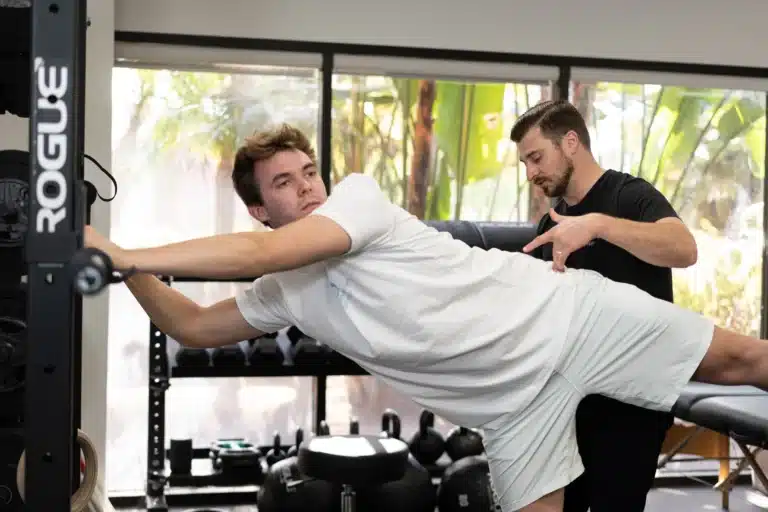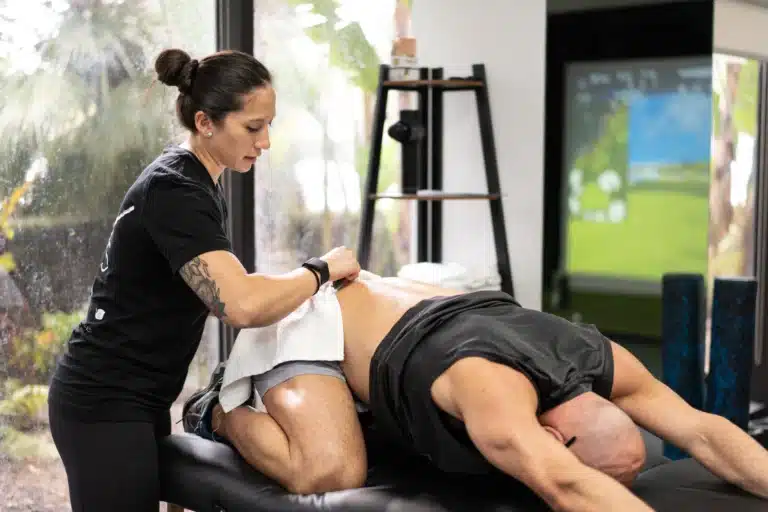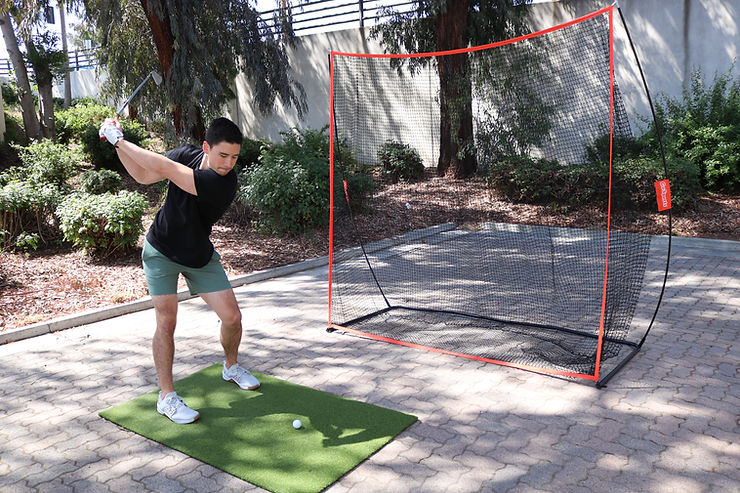Physical therapy at The Movement Schopp combines the healing touch of traditional massage with the targeted therapeutic goals of physical therapy. Unlike regular massage therapy, focusing primarily on relaxation and general well-being, physical therapy massage is designed to address specific medical conditions and rehabilitative needs. This specialized approach alleviates pain and discomfort, promotes recovery, and enhances improved mobility and physical function.
What is Physical Therapy Massage?
Physical therapy massage involves licensed physical therapists manipulating the layers of muscles and muscle fibers of the body using various manual techniques to relieve pain, reduce inflammation, and improve joint mobility. This approach addresses a wide range of musculoskeletal issues and promotes overall health care. Unlike regular massages, often performed by massage therapists for relaxation and muscle relaxation, physical therapy massages are part of a comprehensive physical therapy treatment plan that addresses specific musculoskeletal issues and promotes overall health care professionals. This approach also includes methods like lymphatic drainage massage and neuromuscular therapy.
Do Physical Therapists Provide Massage Therapy?
Yes, physical therapists often incorporate massage therapy into their treatment plans. They use massage techniques as part of a broader therapeutic strategy to address pain, improve movement, and facilitate healing, promoting faster healing. These professionals are trained to understand the intricacies of the musculoskeletal system, allowing them to apply physiotherapy massage in a way that targets the root cause of pain and dysfunction, enhancing optimal recovery. This can include sports massage techniques for sports injuries or Swedish massage for relaxation and improved mobility and physical function.
How Physical Therapy Massage Differs from Traditional Massage
While traditional massage focuses on relaxation and stress relief, physical therapy is tailored to treat specific medical conditions and injuries. Physical therapists use their expertise in anatomy and rehabilitation to apply therapeutic techniques that complement other interventions such as exercise, stretching, and joint mobilizations. Type of massage techniques like transverse friction massage and trigger point release are commonly used. This approach ensures that the therapeutic massage feels good and contributes to the overall treatment goals, including muscle activation and functional movement. Techniques like transverse friction massage and trigger point release are commonly used. This combination of massage techniques and physical therapy exercises optimizes recovery and functional movement, ensuring comprehensive treatment for a variety of conditions.
How Does Physical Therapy Massage Work?
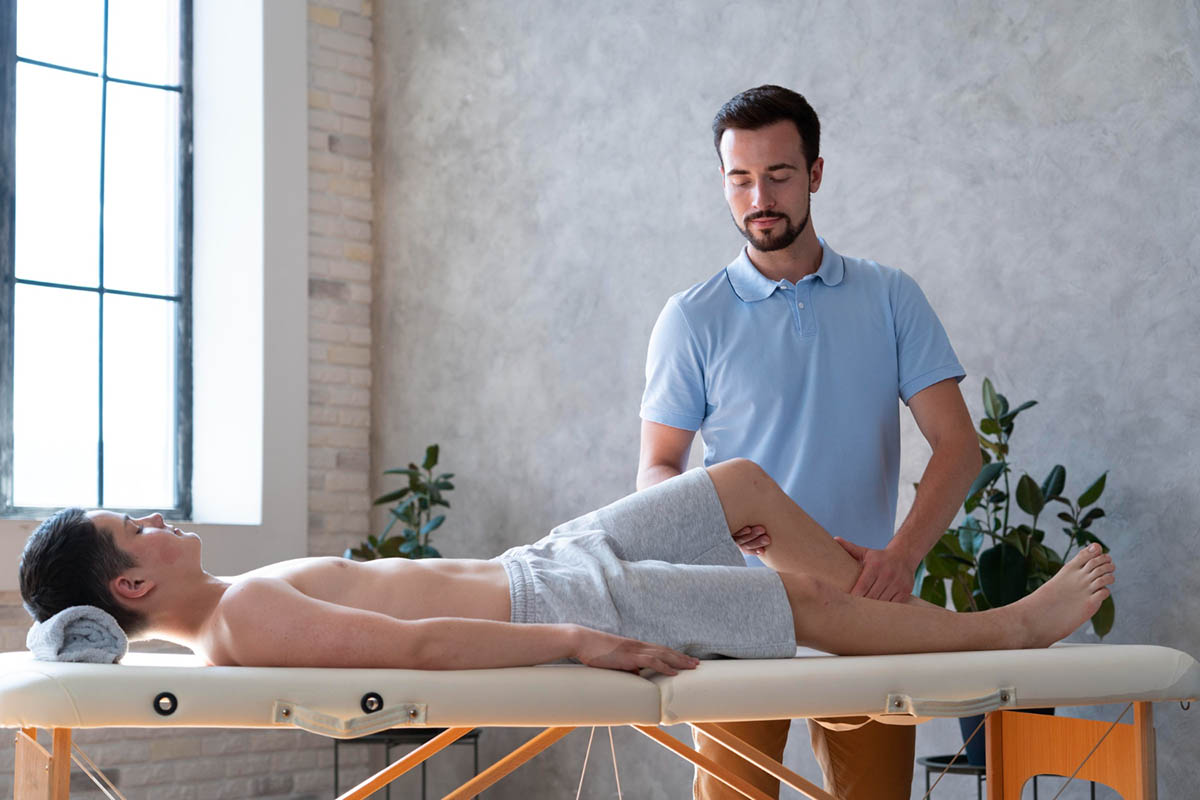
Physical therapy massage manipulates the body’s soft tissues, including muscles, ligaments, and tendons, to relieve tension and promote the healing process. These techniques can improve blood flow, reduce muscle stiffness, and break down scar tissue formation. The therapist uses various techniques to target specific areas of pain and dysfunction, including deep tissue massage and active release technique. These techniques can improve blood flow, reduce muscle stiffness, and break down scar tissue formation, all contributing to enhanced immune function and reduced pain. Hot stone massage can also be integrated to add therapeutic benefits. This form of massage helps address a wide variety of issues.
The Benefits of Physical Therapy Massage
43% of Americans receiving physical therapy and massage reported doing so for health conditions such as pain management, chronic condition rehabilitation, migraine control, or overall wellness. Both massage and routine physical therapy help treat sub-acute and chronic nonspecific low back pain, especially if accompanied by exercise. Combining massage and physical therapy exercises can significantly improve pain and functionality.
Reduce Pain and Inflammation
Physical therapy massage is highly effective in reducing pain and inflammation, including symptoms associated with myofascial pain syndrome. By applying targeted pressure to affected areas, therapists can relieve muscle tension and improve circulation, which helps reduce swelling and pain. This can be particularly beneficial for individuals with chronic pain conditions such as arthritis, plantar fasciitis, or myofascial restrictions, ensuring temporary relief. Improved circulation is key in reducing the onset of muscle soreness and enhancing recovery.
Improve Flexibility and Range of Motion
Regular physical therapy massage can significantly improve flexibility and range of motion. This is especially important for recovering from injuries or surgery, including sports injuries. By loosening tight muscles and increasing blood flow to the affected areas, massage therapy helps restore standard movement patterns and enhances overall athletic performance. This approach to hands-on physical therapy is crucial for reducing restricted movement and enhancing peak performance.
Improve Posture
Poor posture can lead to various musculoskeletal problems, including back pain and muscle knots, affecting daily activities. Physical therapy massage addresses these issues by releasing soft tissue tension and improving proper alignment. Over time, this can improve alignment and reduce posture-related discomfort, enhancing overall muscle strength and physical activity.
Improve Blood Circulation
Enhanced blood circulation is one of the key benefits of physical therapy massage, contributing to long-term health benefits. Better circulation ensures that oxygen and nutrients are efficiently delivered to tissues and organs, promoting enhanced healing and recovery. Improved blood flow also helps remove metabolic waste products from the body, reducing muscle soreness and fatigue, enhancing energy levels, and reducing the risk of injury. This is particularly important for recovery from exercise and preventing muscle constriction.
Reduce Stress
Stress reduction is another significant benefit of physical therapy massage. Massage treatment has lowered cortisol levels by 40% in just one session. Lowering stress hormones promotes relaxation, improves overall emotional benefits, and enhances the body’s ability to heal, contributing to optimal health and reducing generalized anxiety disorder. This holistic approach to stress levels can significantly improve mental benefits.
Lessen Scar Tissue
Scar tissue formation can develop after injuries or surgeries, leading to stiffness and pain. Physical therapy massage techniques, such as myofascial release and soft tissue manipulation, can break down scar tissue and improve tissue elasticity. This results in better joint function and less discomfort in the affected areas, enhancing the recovery process and post-surgical scars. Improved tissue elasticity is particularly beneficial for those recovering from joint replacements.
Common Massage Techniques in Physical Therapy
Myofascial Release
Myofascial release is a technique that targets the fascia, the connective tissue that surrounds muscles and organs. This technique involves applying sustained pressure to areas of tightness to release tension and improve mobility. This gentle mobilization is essential for addressing myofascial restrictions. These common techniques are widely used in physical therapy.
Soft Tissue Massage
Soft tissue massage manipulates the muscles, tendons, and ligaments to relieve pain and improve function. This technique commonly treats sports-related injuries and muscle tension, promoting peak performance.
Active Release Therapy
Active Release Therapy (ART) involves the therapist applying gentle pressure with their hands while the patient performs specific movements. This technique helps break up adhesions and scar tissue formation, improving joint mobility and reducing pain. This physical manipulation is critical for reducing pain and enhancing function.
Trigger Point Release
Trigger point release targets specific points of tension within muscles that can cause referred pain in other areas of the body. Therapists can relieve pain and improve muscle function by applying pressure to these points. This effective treatment is essential for reducing musculoskeletal pain and aiding injury prevention.
When to Consider Physical Therapy Massage
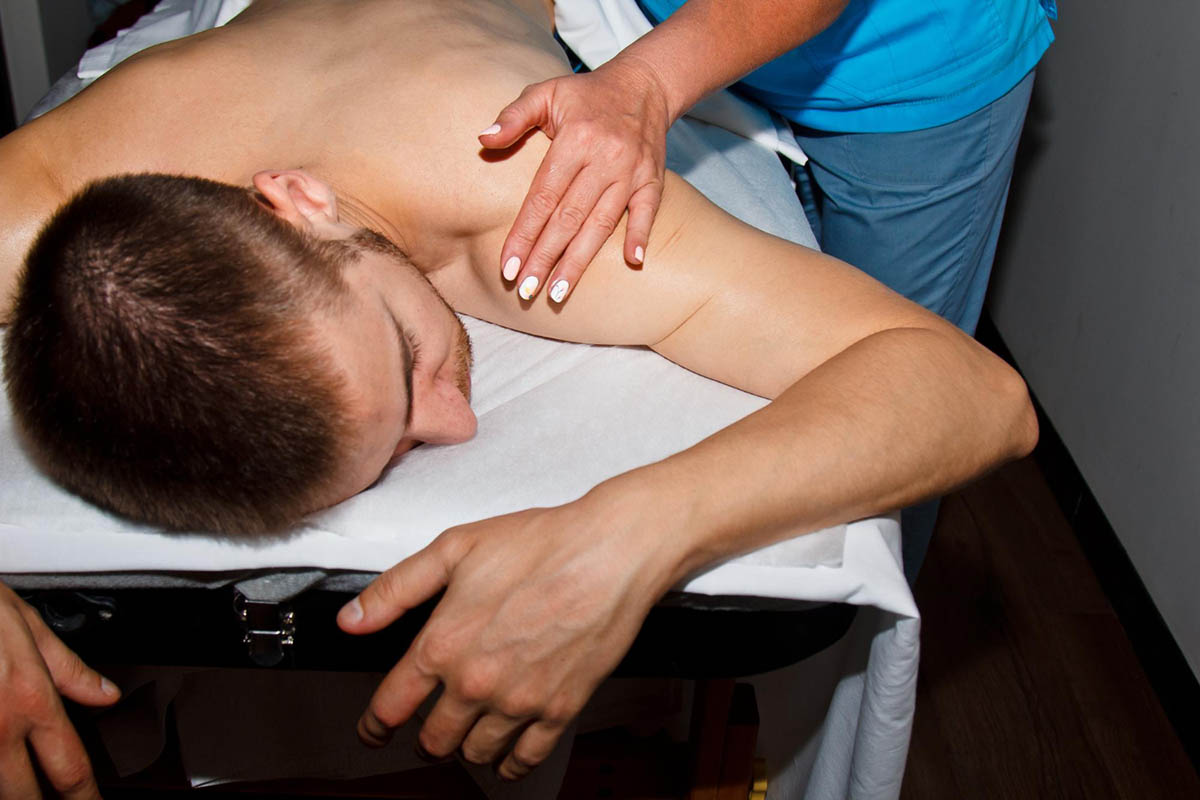
Physical therapy massage benefits many conditions, including chronic pain, sports-related injuries, post-surgical recovery, and general muscle tightness. If you are experiencing persistent pain or limited mobility or are recovering from an injury or surgery, physical therapy massage may be a practical non-surgical approach to enhance recovery and prevent future injuries. This wide variety of benefits makes it a valuable addition to your healthcare routine.
What to Expect During Physical Therapy Massage
During a physical therapy massage session, your therapist will assess your condition and develop a personalized treatment plan tailored to your needs. The session will typically involve a combination of therapeutic techniques to address specific areas of pain and dysfunction. Your therapist will also guide resistance bands and foam rollers to complement the massage therapy and enhance overall treatment outcomes. This holistic healing approach ensures a comprehensive path to recovery. Your medical history will also be considered to tailor the treatment effectively.
Conclusion
Physical therapy massage offers many benefits beyond relaxation, including enhanced healing for muscle injuries and improved athletic performance. This specialized therapeutic massage can significantly improve quality of life by addressing specific medical conditions such as muscle spasms, shoulder pain, neurological conditions, and soft tissue injuries. Whether you are dealing with chronic pain, recovering from an injury, or simply looking for physical therapy massage near me to enhance your physical well-being, physical therapy massage can be a valuable component of your treatment plan, often covered by health insurance. This approach to health ensures that patients achieve their health goals effectively.
FAQ’s
What does massage do in physical therapy?
Massage in physical therapy helps relieve pain, reduce inflammation, improve circulation, and enhance joint function. It complements other therapeutic interventions by addressing soft tissue issues and promoting healing. Consistent physical therapy massage can also achieve long-term health benefits.
Is massage part of physiotherapy?
Yes, massage therapy is often an integral part of physiotherapy. Physical therapists use massage techniques to address specific musculoskeletal problems and enhance the effectiveness of other therapeutic interventions. Chair massages can also be part of physiotherapy in some settings.
What are the physical benefits of massage therapy?
Massage therapy offers numerous physical benefits, including pain relief, improved flexibility, enhanced circulation, reduced stress, and scar tissue breakdown. These benefits contribute to overall physical health and well-being, and the role of massage in physical therapy is crucial for achieving these benefits.


